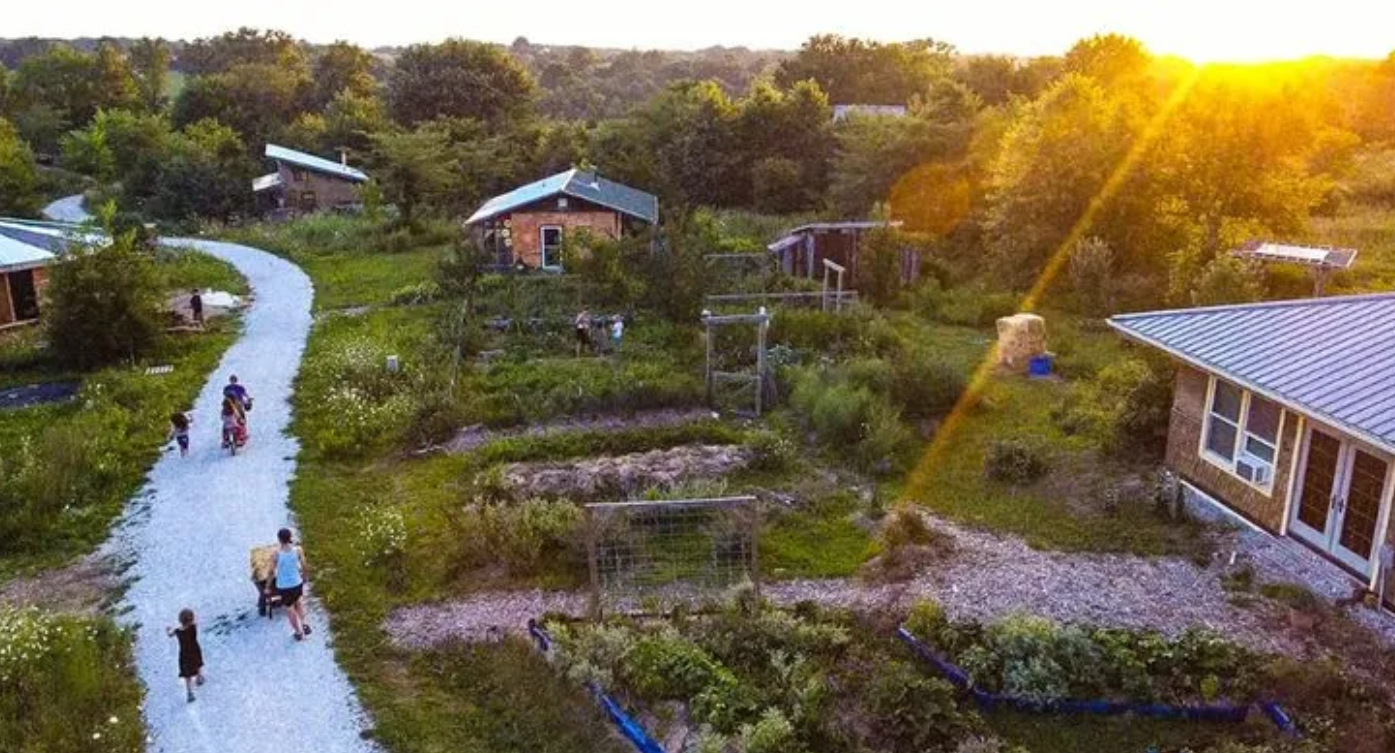This is an excerpt from an article that pulls together information about the keys to launching and maintaining a successful intentional community. To read the complete article, visit the blog post on this topic here.
What is an “intentional community,” and what makes it successful for the people involved?
Most of the information for this article is from several of the 14 podcast episodes in the first season of the Inside Community series sponsored by the Foundation for Intentional Community (FIC) and produced by Rebecca Mesritz. Ms. Mesritz is one of the Co-founders of the Emerald Village intentional community located in San Diego, California, and is currently co-founding the Terra Lumen Community in southern Oregon. She says:
“If there’s anything that we’ve learned from the time of COVID, and extreme weather events and polarization in the government, it’s that … now more than ever we need each other to survive.” (1)
Rebecca also graciously gave me further information in an interview and provided additional input to this research.
Executive Summary:
Here is a list of the key success elements for intentional community that rose to the top for me as I listened to Rebecca Mesritz’s podcasts and spoke with Rebecca. Most of these concepts are explained further in the complete article:
Joy: A place that is nourishing, fun, and rewarding to live with like-minded others, including great food.
Vision: A clear vision and mission for what this community is dedicated to, and what it wants to accomplish.
Higher purpose: Collaborative work towards achieving a purpose greater than the community itself.
Place: The right choice of a place to live, that supports the vision and mission of the community.
People: Responsible, mature, active people dedicated to working together to realize the community’s vision.
Agreements: Clear agreements about expectations concerning how the community will live and work together.
Desire for Growth: Members need to be dedicated to growth and learning, as a community, and personally.
Realism: Living in community is not a fairy tale utopia. People need to realize it will often be hard work.
Finance: Great financial management and financial sustainability that is equitable for all members.
Structure: Excellent up-front and ongoing organization, systems, and processes for all aspects of community life.
Land engagement: “(those) that succeed are…where everybody is committed to being engaged in the land.” (2)
Community mind: Expanding the scope of self-interest beyond oneself to know we can only thrive together.
Shared power: Community members must share leadership and power, without egos getting in the way(3).
Communication: Excellent, transparent, non-violent, inclusive, ongoing communication with all members.
In terms of founding vs. joining an intentional community, the following exchange between Rebecca Mesritz and community expert Yana Ludwig is particularly striking: (4)
(RM)
this whole endeavor…of founding community…it’s really hard. So, if you can find a community to join that’s already up and running and shares your values…you should just go.
(YL)
…you’re going to put in two to seven years (to found a community), and you’re going to get something that’s (only) close (to your vision)…(so) I am very pro joining community rather than starting them…unless you’ve got a really strong founders urge…
Introduction:
The 30+ year-old Foundation for Intentional Community, defines an intentional community as “a group of people who have chosen to live together or share resources on the basis of common values.” At the time of this writing, the FIC intentional community directory lists over 1000 intentional communities (5), including some like Dancing Rabbit Ecovillage in Rutledge, Missouri, where the FIC is located, which have been in existence for decades.
Why might you want to live in an intentional community? There are so many reasons it would take a long article of its own to list them all, but here are a few:
Accomplishing things together that are impossible for individuals or families to do on their own.
Cultivating very deep, meaningful relationships through daily contact and shared experiences.
Enjoying great times having meals, educating children, working, and sharing spiritual practice together.
Contributing to something you believe in that is greater than yourself.
Living in a beautiful place you might not be able to afford or create by yourself.
Learning things from and with each other you would not have learned without being in community.
Being connected to the earth and the land through ongoing work on the property.
What can some of the challenges be of living in an intentional community? Again, this topic could fill many articles. Off the top of my head, some of these can be:
If one person, or a small group of people, have all the power, other people feel dominated and leave.
People’s emotional “stuff” comes up. Each person needs to be responsible for doing their own personal work.
You can’t hide. People’s moods and shadow sides are readily apparent when they live closely together.
Living in community doesn’t solve your personal issues. You have to be accountable and take care of yourself.
In life, people often aren’t easy to deal with. When you’re in a community, you have to deal with them.
Everyone needs to compromise on some things to create a situation that works for all.
To build and maintain a community is a lot of work, physically, mentally, emotionally, and takes a lot of time.
In the complete article, success factors for intentional community are broken down into three categories:
Overall Principles
Creating a Community
Sustaining a Community
To read about these, please visit the complete article on this topic here.
NOTES:
All podcast episodes are located on the https://ic.org website HERE.
Episode 1: What is Community? Fantasy vs. Reality with Rebecca Mesritz, at approx. 5 minutes
Episode 5: Demystifying Legal Frameworks with Clifford Paulin & Jonah Mesritz, at approx. 1 hour 16 minutes
Episode 4: Part I: Finding Co-Founders & Creating Cooperative Culture with Yana Ludwig, at approx. 26 minutes
Episode 4: at approx. 30 minutes
Source: The Conscious Resistance Network
